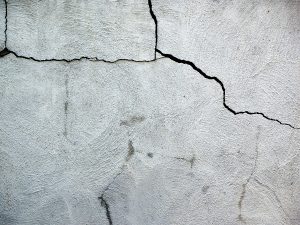Foundation Crack Repair
A study by the National Foundation Repair Association, Inc. (NAFRA) in 2012 says that over 65% of homes have displayed some form of foundation weakness. Out of this number over 80% have a foundation crack which compromises the entire structure.
In its own study, the Concrete Foundation Association (CFA) says that over 78% of its members are called up for foundation crack repair projects. This highlights the danger that most households are exposed to every day. It is for this reason that as a conscious homeowner, you need to get more insight on pertinent issues around this common problem in order to remedy it early.
Understanding Foundation Cracks
Concrete might be strong and durable, but sometimes its tensile strength is not up to the task. There can be structural problems with the concrete leading to fine cracks or even functional defects. If the cracks are static, small hairline cracks can be seen while for dynamic cracks; horizontal cracks appear signifying structural failure.
Risks of Foundation Cracks
While some of these cracks might appear innocuous, the danger they pose in the long run can be devastating. Some of these major risks include:
- Moisture leakage will compromise the strength of the structure when these cracks enlarge with time.
- Radon gas migration from the soil to the indoors thus posing great health risks to occupants.
- Basement flooding caused by cracks leads to damage to property and equipment that is stored underneath the living space.
- High humidity in the spaces underneath leads to mold growth which causes respiratory complications.
There are still more risks including loss of your home’s value and the danger of your beautiful house collapsing. This highlights the need for immediate professional repairs by a registered foundation contractor.
Foundation Crack Repair Techniques
Every structure’s foundation varies but when it comes to repairs, the strategies used are uniform. They include:
- Use of epoxy injection: This is considered the most basic form of repair and is mostly done internally. It involves cleaning and then injecting epoxy paste and a resin which helps it to bond tightly into the crack.
- Polyurethanes: These are 2-part polymers that are expansive and flexible. The hydrophilic type attracts water in its curing while the hydrophobic polyurethane repels or displaces water just like epoxy in the cracks.
Other procedures are used to restore the structural integrity of your home’s foundation, but the choice will depend on your contractor’s assessment. Whatever the case, never take these seemingly minor defects lightly. Instead, promptly call a foundation crack repair expert to initiate immediate restoration.




